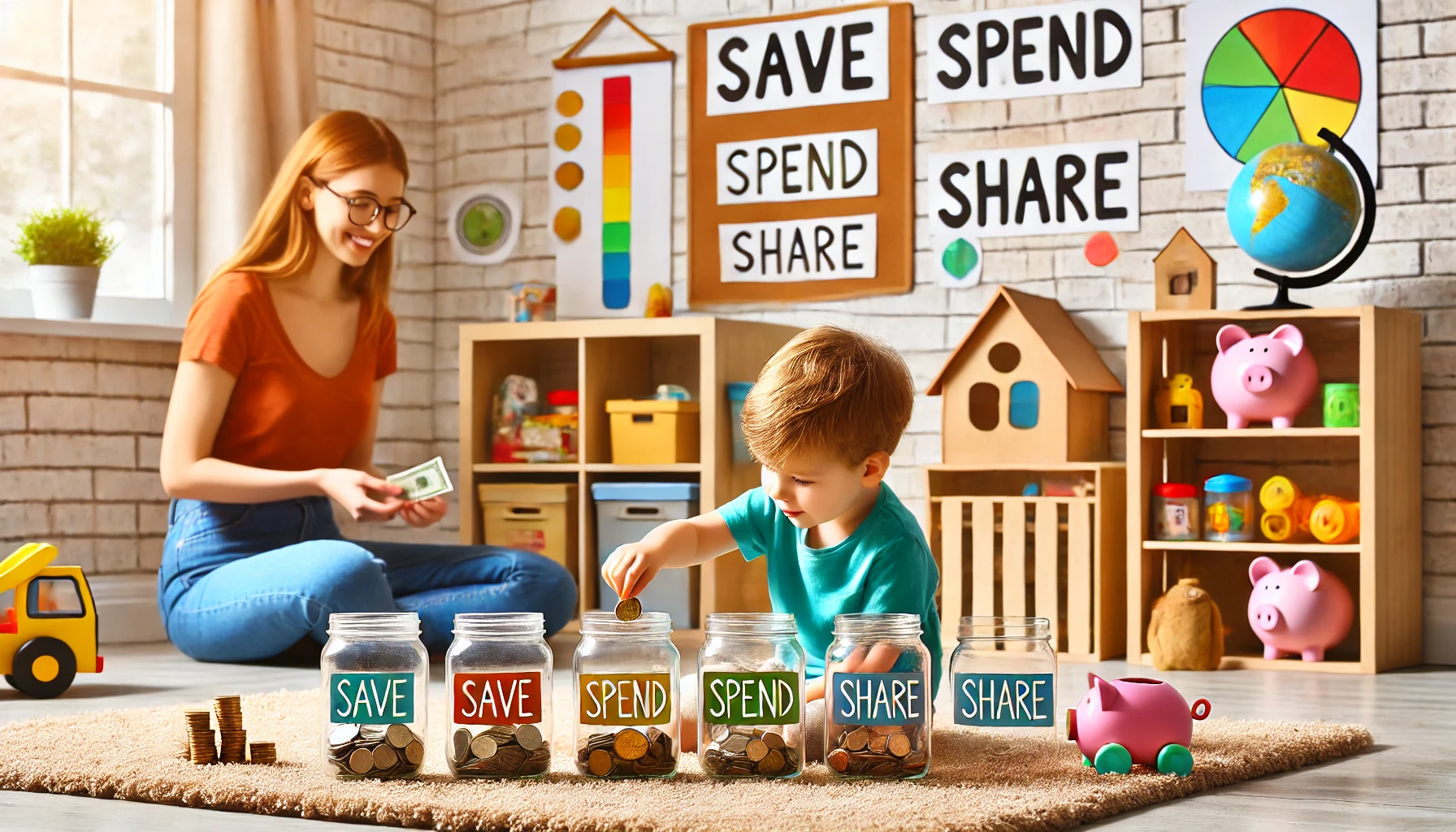While young children don’t need to understand banking or budgets, they can begin to learn about the basic value of money, saving, and thoughtful spending. Teaching financial awareness early helps build lifelong habits of responsibility and intentional decision-making. When done through play, stories, and daily routines, money lessons can be fun and meaningful for kids.
Why Teaching About Money Matters
- Builds good habits early in life
- Encourages responsibility and patience
- Introduces basic math and decision-making
- Prepares children for real-world choices
- Reduces entitlement and increases gratitude
1. Introduce the Concept of Money Through Play
Make money visible and interactive.
Activity Idea:
- Set up a pretend store at home with toys, fake coins, and a register.
- Let your child “buy” and “sell” items using play money.
- Use everyday language: “This toy costs two coins—do you have enough?”
What Kids Learn:
- That money is exchanged for goods.
- The basic idea of earning and spending.
- That they must make choices with limited resources.
2. Talk About Where Money Comes From
Help your child understand that money is earned, not endless.
Activity Idea:
- Say: “People work to earn money. Then they use it to buy food, clothes, and toys.”
- Use real-life examples: “I worked today and earned money that helps us buy groceries.”
- Introduce the idea of effort and reward.
What Kids Learn:
- That money is connected to work and effort.
- Appreciation for what things cost.
- The difference between wants and needs.
3. Use a Three-Jar System: Save, Spend, Share
Teach budgeting with physical visuals.
Activity Idea:
- Label three jars or boxes: Save, Spend, and Share.
- When your child receives money (from allowance, birthdays, or chores), help them divide it among the jars.
- Talk about what each jar is for.
What Kids Learn:
- That money has different purposes.
- How to balance short- and long-term goals.
- The joy of saving and giving.
4. Let Kids Make Simple Money Decisions
Small choices build confidence.
Activity Idea:
- Give your child a small amount to spend at a market or toy store.
- Guide them: “You have $5—what would you like to get?”
- Talk through the decision: “If you buy this, you won’t have enough for that.”
What Kids Learn:
- That choices have consequences.
- How to think before spending.
- That patience can lead to better outcomes.
5. Play Games That Teach Money Skills
Games make learning fun and low-pressure.
Activity Idea:
- Use board games like The Game of Life Junior or Monopoly Junior.
- Try apps or printable worksheets with pretend coins and counting.
- Play matching games with coin names and values.
What Kids Learn:
- Coin recognition and value.
- Counting, sorting, and basic math.
- The concept of earning, saving, and planning.
6. Read Books About Money and Saving
Books spark curiosity and discussion.
Activity Idea:
- Read titles like Bunny Money by Rosemary Wells or Lemonade in Winter by Emily Jenkins.
- After reading, ask: “Why did the character save their money?”
- Let your child create their own money storybook.
What Kids Learn:
- Emotional connection to money decisions.
- How characters solve problems with spending and saving.
- That stories can reflect real-life situations.
7. Be a Role Model With Your Own Money Habits
Your actions speak louder than words.
Activity Idea:
- Narrate your decisions: “I’m saving for a special trip, so I’m skipping this treat today.”
- Let your child help count coins or pay at checkout.
- Share how you manage money at their level of understanding.
What Kids Learn:
- That adults make thoughtful money choices.
- How to delay gratification.
- That it’s okay to say no to spending.
8. Celebrate Smart Money Habits
Reinforcement encourages repetition.
Activity Idea:
- Say: “You saved up for that toy—you made a great choice!”
- Use a “Money Star Chart” for tracking savings or giving.
- Reflect weekly: “What did we spend money on this week? Was it a need or a want?”
What Kids Learn:
- Pride in financial responsibility.
- How to reflect on spending habits.
- Motivation to keep practicing money skills.
Final Thoughts
Teaching young children about money and smart spending isn’t about numbers—it’s about values, choices, and confidence. By making learning hands-on, fun, and relatable, you empower your child to handle money with care and thoughtfulness from the very beginning.
